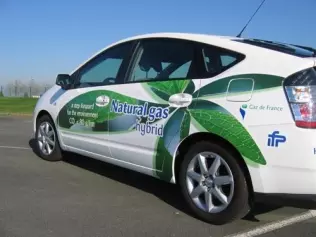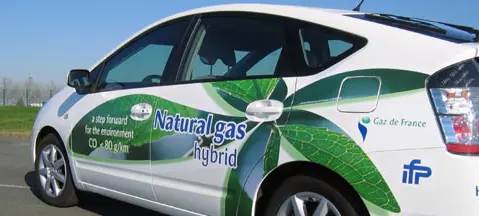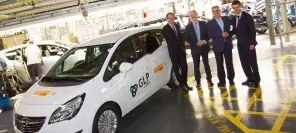- Main page
- Search
- Up to date
- Products
- Technology
- Vehicles
- Video
- Conversion Payback Simulator
Port Injection - Conversion Payback Simulator
Direct Injection - Conversion Payback Simulator
Diesel - Newsletter
Toyota Prius CNG - a more hybrid hybrid
 loading results...
loading results... © Gaz de FranceThe CNG Prius in Mallorca isn't the only one, but we still feel they are too few and far between
© Gaz de FranceThe CNG Prius in Mallorca isn't the only one, but we still feel they are too few and far betweenYou could probably say so, because such a vehicle uses three types of energy – petrol, gaseous fuel and electricity. Sure, petrol becomes useless once the combustion engine switches over to LPG or CNG (which could be immediately when the motor is warm), but still a "gasified” hybrid car becomes a multi-fuel one and that's a fact. What benefits does it have apart from being converted for the thrill of it?
The answer comes from Palma de Mallorca, a city on the Spanish island of Mallorca whose government has received a Toyota Prius adapted to run on CNG. The result is said to be quite stunning – the car is by 40 per cent cheaper to run, emits 30 per cent less CO2 and virtually no nitrogen oxides. Now that's quite something, eh? The entire endeavour is the effect of a cooperation between Palma de Mallorca's authorities and a company specialised in CNG conversions.
The Prius CNG works pretty much the same as any petrol car on a "gaseous diet”. It starts on petrol and once the engine warms up, it switches over to natural gas. Of course, the combustion motor switches on and off while driving, but as long as it remains warm enough, the CNG system resumes methane injection immediately after restart. And once compressed gas is out, the car seamlessly returns to petrol and keeps going just the same, even though it's more expensive and less "green”.
Let's hope there will come a day when LPG- or CNG-electric hybrids are available straight from dealerships. In fact, there were two in Korea a couple of years ago – the Hyundai Elantra LPi HEV and its sibling, the Kia Forte LPi Hybrid. But that was a regional thing, with no sales outside of the domestic market. Given that hybrids are increasingly popular and so are LPG and CNG, maybe someone will tread in Hyundai-Kia's footsteps and combine the benefits of partial electrification and gaseous fuels. Keep your fingers crossed!
Zobacz stronę producenta:
Vialle






